https://www.wineandbarrels.eu/shop/201-coravin-models/Sommeliers, wine producers and importers handle loads of wine on a daily basis. Being expert craftsmen, they’ve got some well-proven and efficient techniques which the rest of us may easily pick up and use. Here’s an overview of some of them.
There’s a trick or two which makes your wine experience a tad better. Here are some tips from the pros for you.
Wine is fundamentally a funny kind of liquid. It may for example look different depending on the glass it’s being served in. It may also alter its appearance depending on the amount of time it’s exposed to oxygen.
Here’s a basic guide on how to get the very best taste experience from your wine. And it definitely doesn’t have to cost an arm and a leg to get a positively divine taste experience.
The right glass
It was Georg Riedel who in the middle of the 80’s showed the wine world just how big of a difference it makes to taste your wine in different glasses. Riedel was the first glassware producer who introduced glasses for different purposes at an unprecedented degree of detail all the way down to the individual sort of wine and wine region.
The great confusion which came from there now being a specific glass for Syrah or for Brunello di Montalcino doesn’t change the fact that Riedel had a point. A lucrative point, yes, but that aside, choosing the right glass is nevertheless something which will greatly influence your taste experience.
There’s no need to lie awake because you haven’t got a Hermitage glass or a glass meant for Riesling grand Cru from Alsace. You’ll do just fine with less. Feel your way, and you’ll soon detect a difference. Check this out for inspiration.
Wine is better lightly chilled
Just as other beverages vary in taste depending on the temperature at serving, the same thing goes for wine. Some of the light and breezy floral notes are suppressed or burned off at too cold or too hot a serving temperature.
Red wine tastes better when served between 12 and 18 degrees Celsius – the light red wines such as pinot noir are better at the cold end of the scale. White wine is best served between 7 and 13 degrees with the crisp ones at the cold end and the full-bodied ones with age at the other. Rosé is best served around 10 degrees. Everyday fizz (cool expression, huh?) are best between 4 and 7 degrees while champagne and high-quality fizz show themselves in the most favourable light when served at the same temperature as white wine.
A tip: If you mostly drink table wine, a lightly chilled temperature will camouflage most aromas that may be slightly “off”. If you serve your wine at temperatures above 21 degrees, it’ll make it taste boozier as the alcohol will evaporate the more the temperature rises.
You can get wine coolers with two temperature zones. That’s ideal if you want a selection of reds and whites ready for serving. Check it out here.
Know your corkscrew
There are loads of different corkscrews, but the one employed commonly by waiters is the most popular one. Its functionalities are pretty easy to work out: In goes the spiral, and then use the lifter to pull out the cork. It’s the little details that may cause confusion.
Sommeliers cut off the foil at the base for traditional reasons because the foil used to be made of lead. You also reduce the risk of the wine dripping when pouring it. A foil cutter, on the other hand, will cut along the top rim which may, depending on taste, look nicer. That’s why some use this tool when they want a bottle to present itself visually.
When sinking the corkscrew spiral into the cork, make sure that it goes in a few millimetres from the centre because it’s essential to keep the centre of the spiral right above the middle of the cork. In that way, your pull at the cork will be gentler, and you’ll minimise the risk of it crumbling.
The decanter is your wine’s best friend
Oxidation is commonly forgotten when serving wine. Meanwhile, oxidation is key. The classic way is to pour the wine into a decanter for an hour or so, but a lowly bowl or pot may do the trick as well. The same goes for a decanting funnel, just a lot quicker.
Except for really old red and white wines, hardly any wine will be worse off after going through the decanter. So, it’s basically a “why not?” question. The wine will open up and become much more appealing right from the first mouthful.
With cheaper wines from 60 kr. and down, you may encounter unpleasant odours of rotten eggs or boiled garlic. Despite of this sulphur-like smell, it’s got nothing to do with sulphur. In reality, it’s a minor flaw in the wine which is caused by the yeast having insufficient nourishment during fermentation. This is particularly common with alcoholic fermentation at an industrial scale. Oxidising the wine will most often rid it of these unpleasant notes and make it more appealing. Some say that the wine should be allowed to “fart” before serving. Charming, right?
The stench of rotten eggs may sometimes also be removed by stirring the wine with a silver spoon. It actually works.
Storing leftovers
Let’s pretend that there’s such a thing as wine leftovers. From a large wine tasting perhaps. Strictly hypothetically, that is.
The damage is done as the oxidation process started the second you uncorked the bottle. The only thing for us to do now is to limit the flow of oxygen.
Oxygen is the arch-enemy of wine. Thus, the cheapest and most simple method is to pour the wine onto smaller bottles and thereby expose it to less oxygen.
You can get various bottle pumps, and they may be excellent if they in fact fit tightly. Most wines will – in a half-bottle or with a pump – last a couple of days in the fridge or in the wine cooler where the low temperature will delay the process going on in the wine. The wine won’t taste exactly as when you uncorked it, but it’ll normally be quite drinkable.
Finally, there are the systems where a heavy gas is placed as a protective membrane on the surface of the wine. The most widespread and successful version, Coravin, employs the noble gas argon which is injected through the cork of the bottle while pouring a glass of wine. The cork never leaves the bottle. There are stories of wines which have yielded a highly satisfying glass of wine a month over a period of six months.
Wine bars, restaurants and wine enthusiasts are generally very fond of Coravin because it enables you to taste a glass from many different and potentially costly wines without having to empty the bottle immediately.
So, there are numerous methods to preserve leftovers and to taste a wine one slow glass at a time without ruining the remains.
To sum up, you may improve your wine experience enormously by having the right kinds of glasses, serving the wine lightly chilled, knowing your corkscrew, pouring all your wine into a decanter and storing your leftovers in a fridge with as little contact with oxygen as possible.
We wish you and your wine mates happy times.
Kind regards,

Michael Kahr Jørgensen
Sommelier
















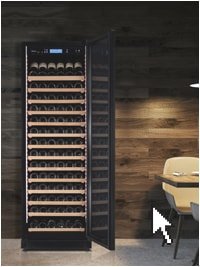
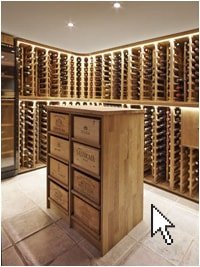
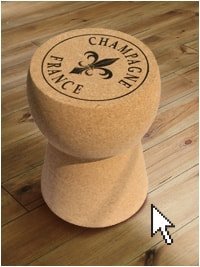
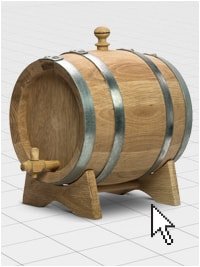
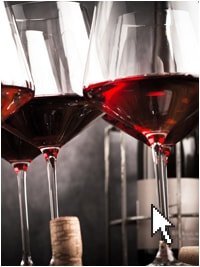
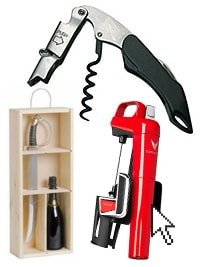


















We will publicly show your name and comment on this website. Your email is to ensure that the author of this post can get back to you. We promise to keep your data safe and secure.